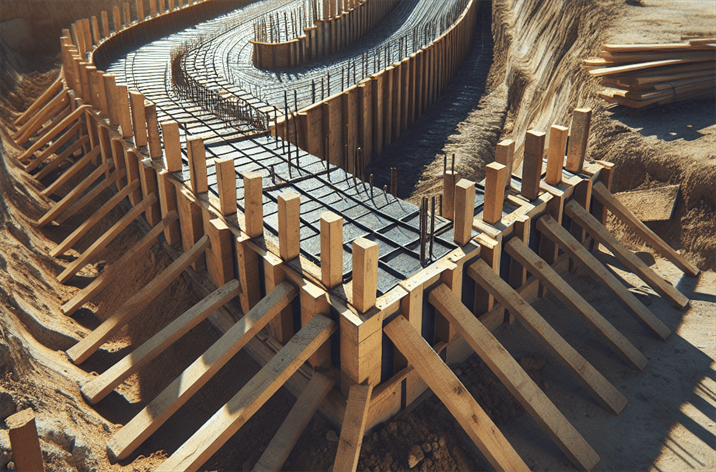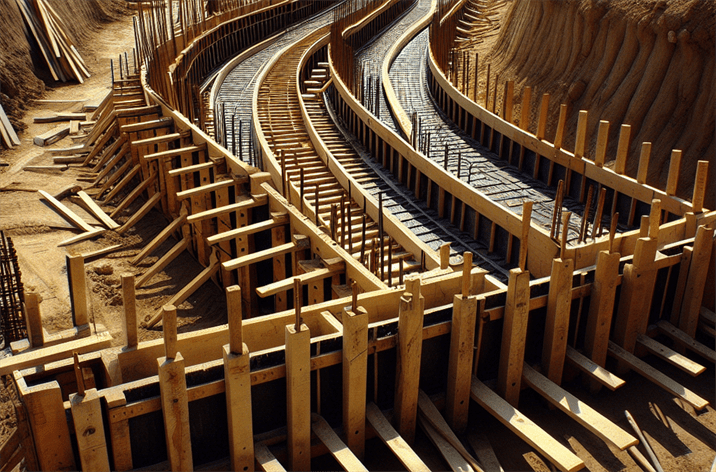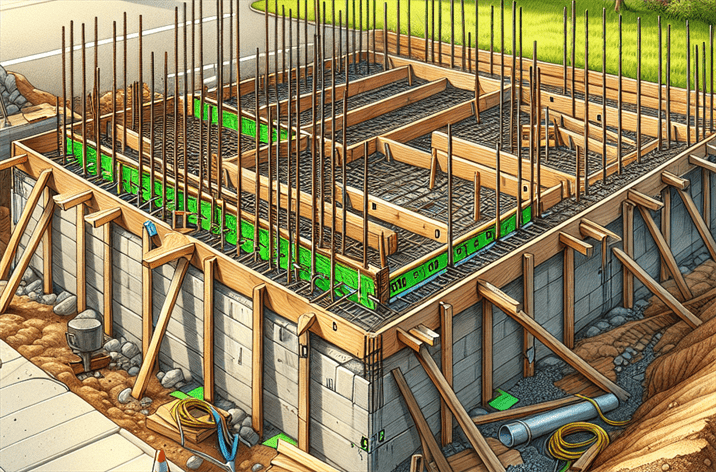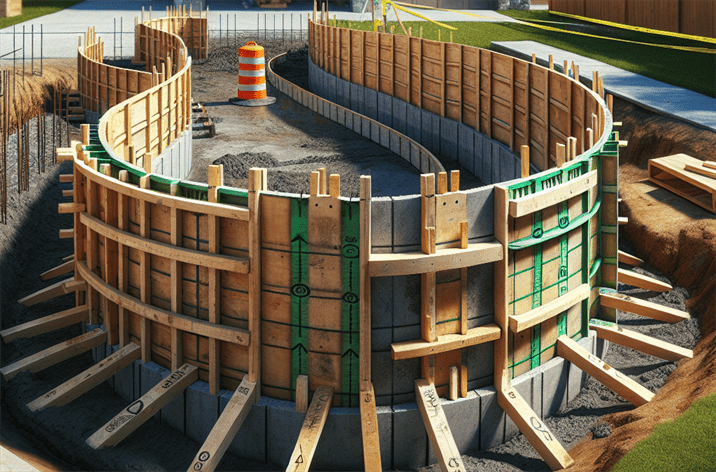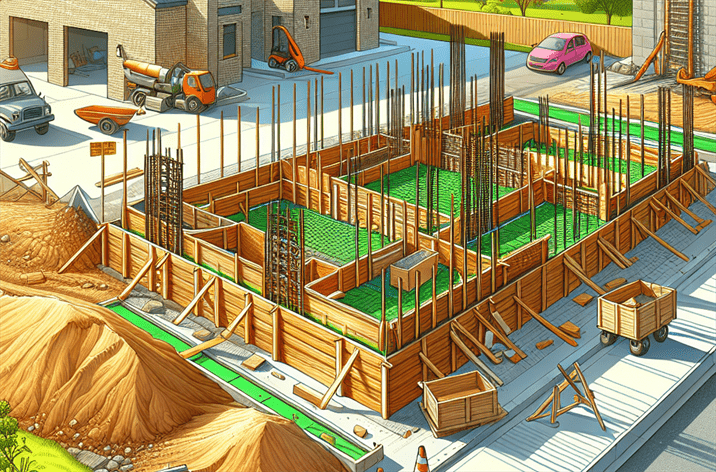# Stakes and Lath: Essential Tools for Construction Success
### Introduction
Did you know that the humble wooden stake has been a cornerstone of construction projects for centuries? From ancient civilizations to modern skyscrapers, stakes and lath have played a pivotal role in defining boundaries, providing support, and ensuring accuracy in construction layouts. As construction technology evolves, the importance of these traditional tools remains steadfast, underscoring their vital role in achieving project success.
In the construction industry, stakes and lath are not just mere wooden pieces; they are integral to the planning, execution, and completion of projects. Recent trends show a resurgence in their use, fueled by innovations in materials and techniques that enhance their effectiveness. For example, the growing preference for eco-friendly materials has led to a renewed interest in sustainable wooden stakes, which offer durability without compromising environmental values.
Throughout this article, we will delve into the world of stakes and lath. We will explore their definitions, historical significance, applications in construction, and the benefits they bring to modern projects. By the end of this read, you will have a comprehensive understanding of how these tools contribute to construction success and how to effectively utilize them.
### What is Stakes and Lath?
#### Definition
**Stakes** and **lath** are essential components in the construction and landscaping industries. Simply put, stakes are pointed pieces of wood or metal driven into the ground to mark boundaries or provide support for structures. They can be used for various purposes, including surveying, fencing, and landscaping. **Lath**, on the other hand, refers to thin strips of wood that serve as a base for plaster, stucco, or other building materials. Together, stakes and lath create a framework that enhances stability and precision in construction projects.
#### Historical Context
The use of stakes and lath dates back to ancient construction practices. The Egyptians used wooden stakes to outline the foundations of their monumental structures, while the Romans employed similar techniques for their aqueduct systems. Over the years, the materials and methods have evolved, but the fundamental principles remain unchanged. The introduction of treated wood and synthetic materials has enhanced the durability and longevity of stakes and lath, making them more suitable for various environmental conditions.
#### The Importance of Stakes and Lath
In today’s construction landscape, the significance of stakes and lath cannot be overstated. With the increasing complexity of projects and the demand for precision, these tools have become indispensable. They play a crucial role in project layout, ensuring that all measurements are accurate and that structures are built according to specifications. Moreover, stakes and lath help in visualizing the end result, allowing contractors and clients to align their expectations with the physical layout of the project.
##### Stakes and Lath in the Context of Construction
Stakes and lath are often employed at various stages of construction. During the initial layout phase, stakes are driven into the ground to outline the dimensions of the project. Lath is then used to create a framework for walls or fences, providing essential support for other materials. This collaborative use ensures that the structure is both stable and accurately positioned within the designated area.
##### Key Players or Contributors
Numerous companies have advanced the use of stakes and lath in construction. For instance, specialized manufacturers focus on producing high-quality wooden stakes designed for specific applications, from fencing projects to surveying. Innovations in materials, such as eco-friendly options and enhanced durability treatments, have further revolutionized this industry.
For further insights, explore our guide on [**best practices for using stakes and lath in construction**](https://stansindustrialmanufacturing.com/best-practices-for-using-stakes-and-lath-in-construction/).
### How Does Stakes and Lath Work?
#### The Mechanics of Stakes and Lath
The effectiveness of stakes and lath lies in their simplicity and versatility. When stakes are driven into the ground, they create reference points that guide the construction process. For example, in a fencing project, stakes can be used to outline the perimeter, ensuring that the fence is erected in the correct position. Lath provides additional support, acting as a framework that holds various materials together, thereby enhancing the overall stability of the structure.
#### Technological Foundations of Stakes and Lath
Modern technology has improved the tools and materials used for stakes and lath. For instance, advancements in wood treatment have led to the development of pressure-treated wood, which resists rot and damage from pests. Additionally, synthetic materials are now available, offering alternatives that may be lighter and more durable than traditional wood. These innovations ensure that stakes and lath can withstand the rigors of construction while maintaining their structural integrity.
#### Real-World Applications of Stakes and Lath
Stakes and lath can be found in a variety of applications, from residential fencing to large-scale construction projects. Here are a few examples:
– **Fencing**: In fencing projects, stakes are used to establish the corners and endpoints, while lath provides support for the fencing material, ensuring it remains upright and secure.
– **Landscaping**: Gardeners use stakes and lath to create borders, delineate planting areas, and support climbing plants, promoting healthy growth and organization.
– **Surveying**: Surveyors utilize stakes to mark property boundaries and establish reference points, ensuring accurate measurements throughout the survey process.
#### Case Studies/Examples of Stakes and Lath in Action
1. **Residential Fencing Project**: A homeowner decided to install a new wooden fence. Using stakes, the contractor marked the corners and endpoints, ensuring that the fence followed the intended line. Lath was then used to provide additional support for the fence panels, resulting in a sturdy and visually appealing boundary.
2. **Landscaping in Urban Areas**: A city park renovation project involved the use of stakes to outline new flower beds. Lath was utilized to support decorative fencing around the beds, enhancing the park’s aesthetic appeal while also protecting the plants.
3. **Surveying for New Developments**: In a commercial construction project, surveyors used stakes to mark the boundaries of the site. This precise layout allowed construction teams to work efficiently and accurately, minimizing errors that could lead to costly delays.
### Benefits of Using Stakes and Lath in Construction
Utilizing stakes and lath in construction offers numerous advantages, making them essential tools for contractors and builders alike.
– **Improved Accuracy**: Stakes provide clear reference points, ensuring that all measurements are precise. This accuracy is vital for the successful completion of any construction project.
– **Enhanced Stability**: Lath serves as a robust framework that supports various materials, increasing the overall stability of structures.
– **Cost-Effectiveness**: By reducing errors and ensuring proper alignment, stakes and lath can help save time and money throughout the construction process.
– **Versatility**: These tools can be used in various applications, from fencing to landscaping, making them valuable for different projects.
– **Sustainability**: With a growing focus on eco-friendly construction practices, using sustainable wooden stakes aligns with modern environmental standards.
### Future Trends in Stakes and Lath Usage
As the construction industry continues to evolve, several trends are emerging that could impact the use of stakes and lath:
1. **Sustainable Materials**: There is a growing demand for eco-friendly construction materials, including sustainably sourced wood for stakes and lath. This trend is likely to continue as environmental awareness increases.
2. **Smart Construction Technology**: The integration of technology in construction may lead to the development of smart stakes and lath that incorporate sensors for real-time monitoring of structural integrity and alignment.
3. **Increased Customization**: As projects become more specialized, the need for customizable stakes and lath will rise. Manufacturers may offer tailored solutions to meet specific project needs.
4. **Training and Best Practices**: As construction techniques advance, ongoing training for workers on the best practices for using stakes and lath will become essential. This ensures that all construction professionals are equipped with the knowledge to use these tools effectively.
### Conclusion
Stakes and lath are indispensable tools in the construction industry, offering a blend of simplicity and functionality that enhances project accuracy and stability. With a rich history and a promising future, these tools continue to play a crucial role in both traditional and modern construction practices.
Whether you’re a contractor, builder, or DIY enthusiast, understanding the benefits and applications of stakes and lath can significantly impact the success of your projects. As you embark on your next construction endeavor, remember the importance of these essential tools and consider exploring our selection of [**affordable stakes and lath for construction needs**](https://stansindustrialmanufacturing.com/affordable-stakes-and-lath-for-construction-needs/). By leveraging the right materials and techniques, you can ensure that your projects are not only successful but also built to last.

